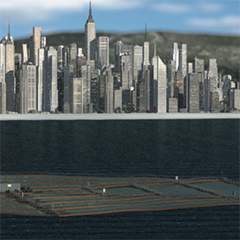India has been witnessing an unprecedented surge in the installation of solar plants since the announcement of the National Solar Mission in 2010. With more than 25GW of installed capacity as on August 2018, the country is chasing the ambitious target of 100 GW Solar PV installations by the year 2022. With increasing installations on land and rooftops, the emerging focus area is to put the untapped vast area of waterbodies to good use. India has 91 major reservoirs with more than 75% of these reservoirs located in the sunny Southern, Western and Central regions.
Installation of solar PV plants on water bodies like lakes, man-made and natural reservoirs, industrial ponds and fish farms could be attractive due to the following reasons:
1. The scarcity of large land areas for installation which, in some cases has led to cultivable lands being sacrificed for installation of solar plants.
2. Increasing price trend of land.
3. Optimal use of evacuation infrastructure, e.g.: near hydel projects.
4. Reuse options for abandoned areas like mines, quarries etc.
5. Conservation of water by reduced evaporation.
6. Limiting algae growth through reduced sunlight penetration into water.
7. Improved generation from PV plants due to lower module temperatures.
8. Possible maintenance cost reduction of plants e.g. Less frequent cleaning of panels and practically no vegetation growth control.
But, shifting of the installation to water throws open additional challenges in terms of cost, site complexities, safety, design life and equipment warranties, long-term effect on biodiversity etc. as outlined below.
Groundwork
As in the case of any installation, properly carried out groundwork goes a long way to ensuring successful implementation.
A floating plant consists of three main components – the floaters, pontoons or rafts, on which the modules are installed, the anchoring, or mooring system and the main equipment and balance of systems – modules, inverters, combiner boxes, cables etc..
The floaters must meet the buoyancy requirements to float on water while supporting the installed equipment. This can be constructed from various materials like Ferro-cement, Fibre-reinforced plastic (FRP) etc., the most common being High-Density Polyethylene (HDPE). The cost of the floaters is proportional to the occupied surface. Hence, it is important to have a modular arrangement to achieve maximum generation with minimum cost, reduce logistics issues and optimize assembly at site.
Proper structural design will entail simulations to assess the dynamic stresses via wind tunnel tests or computational fluid dynamics (CFD) modeling to determine the forces expected on the floats, the connections, and anchoring system.



























